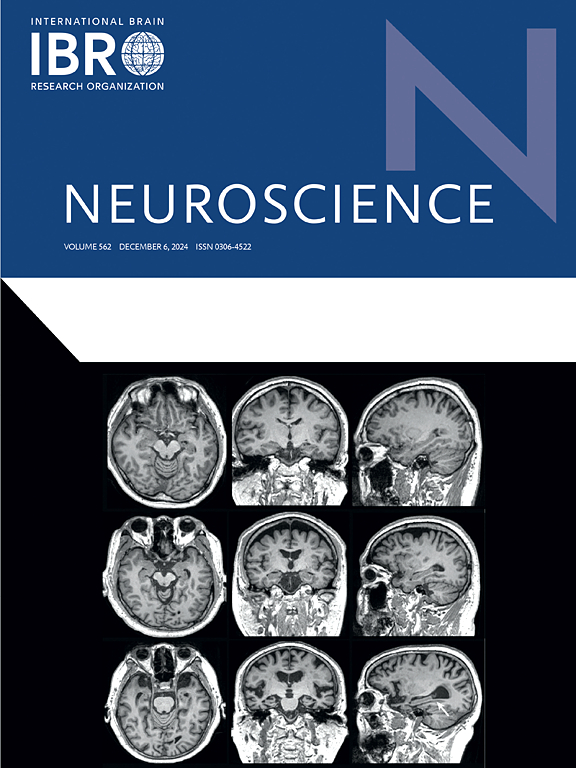Chemokine CCL12 in trigeminal ganglion contributes to CFA-induced mechanical allodynia in mice
IF 2.9
3区 医学
Q2 NEUROSCIENCES
引用次数: 0
Abstract
Chemokines are known to play a role in the nervous system, involving a wide range of functions including the development of chronic pain. The C–C motif chemokine ligand 12 (CCL12) and its receptor CCR2 have been implicated in the pathophysiology of chronic pian. However, the precise mechanisms by which CCL12 influences the development and persistence of pain remain unclear. In this study, we aim to investigate the roles of CCL12 in chronic inflammatory pain at the primary sensory ganglion level. A mouse model of orofacial pain was established by subcutaneous injection of complete Freud’s adjuvant (CFA) into the right whisker pad. Mechanical allodynia was assessed using the von Frey test. The expression of CCL12 in the trigeminal ganglion (TG) was markedly upregulated at 7 days post-injection (dpi). Immunofluorescence and single-cell RNA-sequencing (scRNA-seq) data revealed that CCR2 was predominantly expressed in macrophages in the TG following CFA injection. To specifically target CCL12, an interfering adeno-associated virus (AAV) was administered intraganglionically into the right TG. Knockdown of Ccl12 in the TG significantly alleviated mechanical allodynia and c-Fos expression in the spinal trigeminal nucleus caudalis (SpVc) of CFA mice. Additionally, the infiltration of macrophages and the levels of IL-6 and TNF-α in the TG were significantly increased at 7 dpi and were attenuated by Ccl12 knockdown. These findings suggest that CCL12 contributes to CFA-induced orofacial allodynia by promoting macrophage infiltration and the production of IL-6 and TNF-α in the TG.

三叉神经节趋化因子CCL12参与cfa诱导小鼠机械异常性疼痛。
趋化因子在神经系统中发挥作用,涉及广泛的功能,包括慢性疼痛的发展。C-C基序趋化因子配体12 (CCL12)及其受体CCR2参与慢性肾小球的病理生理。然而,CCL12影响疼痛发展和持续的确切机制尚不清楚。在这项研究中,我们旨在从第一感觉神经节水平探讨CCL12在慢性炎症性疼痛中的作用。通过在右须垫皮下注射完全弗洛伊德佐剂(CFA)建立小鼠口腔面部疼痛模型。采用von Frey试验评估机械异常性痛。CCL12在注射后7 d (dpi)三叉神经节(TG)中的表达明显上调。免疫荧光和单细胞rna测序(scRNA-seq)数据显示,CCR2在注射CFA后的TG巨噬细胞中主要表达。为了特异性靶向CCL12,将一种干扰性腺相关病毒(AAV)通过血管内注入右TG。TG中Ccl12的下调可显著缓解CFA小鼠的机械异常性痛和脊髓三叉神经尾核(SpVc)中c-Fos的表达。此外,巨噬细胞的浸润和TG中IL-6和TNF-α的水平在7 dpi时显著增加,并被Ccl12敲除而减弱。这些研究结果表明,CCL12通过促进巨噬细胞浸润和TG中IL-6和TNF-α的产生,有助于cfa诱导的口面部异常性疼痛。
本文章由计算机程序翻译,如有差异,请以英文原文为准。
求助全文
约1分钟内获得全文
求助全文
来源期刊

Neuroscience
医学-神经科学
CiteScore
6.20
自引率
0.00%
发文量
394
审稿时长
52 days
期刊介绍:
Neuroscience publishes papers describing the results of original research on any aspect of the scientific study of the nervous system. Any paper, however short, will be considered for publication provided that it reports significant, new and carefully confirmed findings with full experimental details.
 求助内容:
求助内容: 应助结果提醒方式:
应助结果提醒方式:


